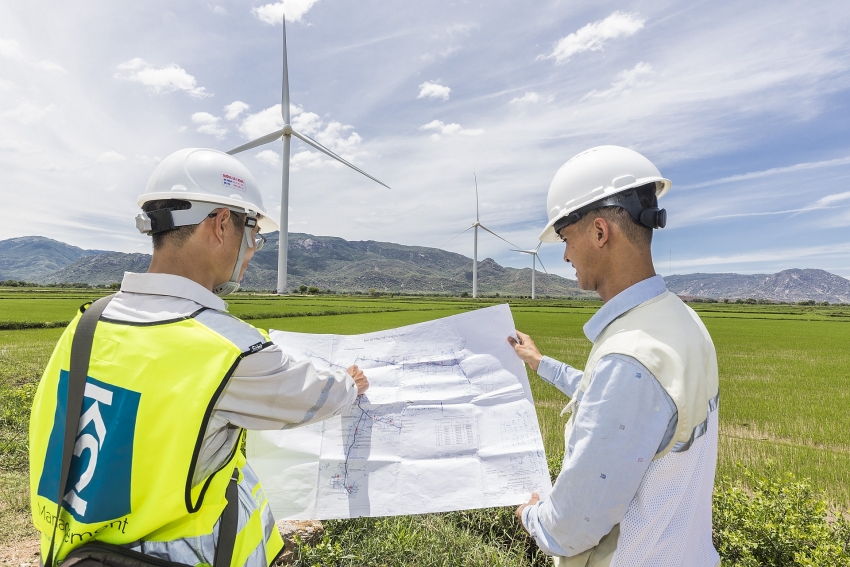New FiT puts new wind in sails of renewables
 |
| Vu Chi Mai, senior project officer of the ‘Support to the Up-Scaling of Wind Power in Vietnam’ project under the GIZ Energy Support Programme |
The revised decision, which will take effect on November 1, will increase the feed-in tariff (FiT) for wind power projects from the current 7.8 US cents per kilowatt-hour (kWh) to 8.5 US cents for onshore wind power projects and 9.8 cents for offshore projects. How would you evaluate these changes?
Decision No.39/2018/QD-TTg dated September 10, 2018 on the revision of the wind tariff set by Decision No.37/2011/QD-TTg on the support mechanism for the development of wind power projects in Vietnam is seen as a positive move by the Vietnamese government to promote wind energy and renewable energy.
It is a positive signal for not only the Vietnamese energy sector, which sees constantly rising demand, but also for the Vietnamese people. With the new FiT, wind power can contribute more to national energy security and indirectly support the country’s economic development and the mitigation of climate change in a more efficient manner.
Is the revised FiT for wind power feasible for investors? If not, what FiT would make your project financially viable?
If the revised FiT was higher, more investors would be interested in the market. This adjustment has been a long time in coming.
Several stakeholders claim that the new FiT makes their wind power projects feasible.The new FiT can benefit the projects which have wind potential and infrastructure advantages such as those close to grids or main roads and have access to good financing conditions. Once the best projects are in operation, the market shall move to a more mature stage, enabling additional projects to come online.
Besides FiT, the power purchase agreement (PPA) is also a barrier for the renewable energy sector as it remains a significant risk for banks and investors. What would you suggest to address this issue?
Two factors influencing project bankability are the level of electricity selling price and the PPA. In the past, when the previous FiT was low, the PPA was considered an important factor to evaluate a project’s bankability. Today as the FiT has been raised, the bankability shall be enhanced despite the unchanged PPA.
The current PPA is seen as acceptable by the local banks but not the international banks. If the projects are financed by local banks, it could be fine.
The question is whether local banks have the capacity to fund a multitude of wind power projects or only a few of them.
In the long run, to achieve the government’s goals on renewable energy development, adjustments to the PPA should be considered to meet the requirements of international financial institutions. This will have a positive impact on the financing of wind power projects.
 |
| The rising price of wind power is a positive sign for the Vietnamese renewable energy sector. Photo: GIZ |
What barriers do you see left for Vietnam’s ambitious plan for renewable power?
Renewable energy is an ongoing international development trend, given the threat of climate change and exhausting fossil fuel resources. The government should issue a more holistic and longer-term development plan. To do so, the following challenges should be removed.
The biggest challenge, we think, is the grid connection issue. Investors, while putting a considerable amount of investment into the project, want to get a clear confirmed grid connection agreement.
Second, financing conditions are important to the bankability of the projects as well as the FiT level. Lower interest rates and longer loan maturity, for instance, would make projects more feasible, thus increasing investment in the field.
Last but not least, clear and transparent policies on wind and renewable energy would maintain investors’ trust and motivation.
In the long run, to achieve the government’s goals on renewable energy development, adjustments to the PPA should be considered to meet the requirements of international financial institutions.
Find further information in VIR published on Monday 17, September 2018.
What the stars mean:
★ Poor ★ ★ Promising ★★★ Good ★★★★ Very good ★★★★★ Exceptional
Related Contents
Latest News
More News
- Vietnam's IFC to target global investment flows (December 21, 2025 | 18:00)
- Ha Tinh breaks ground on major Vingroup industrial and energy projects (December 19, 2025 | 18:24)
- EVN launches major power infrastructure projects nationwide (December 19, 2025 | 18:17)
- VAL inaugurates second production line to meet domestic animal feed demand (December 19, 2025 | 16:37)
- Sun Group pioneers urban tram system in Phu Quoc (December 19, 2025 | 15:00)
- Top 10 notable events of Vietnam’s industry and trade sector in 2025 (December 19, 2025 | 14:00)
- Seven major projects launched to drive Hanoi’s next growth phase (December 19, 2025 | 14:00)
- Rare, beautiful, sustainable: the mark of iconic real estate (December 19, 2025 | 08:00)
- Mondelez Kinh Do - a chapter of purpose-led leadership in Vietnam (December 18, 2025 | 09:44)
- VNPAY services receive the highest-level PCI DSS international security certificates for six consecutive years (December 17, 2025 | 23:47)

 Tag:
Tag:

























 Mobile Version
Mobile Version